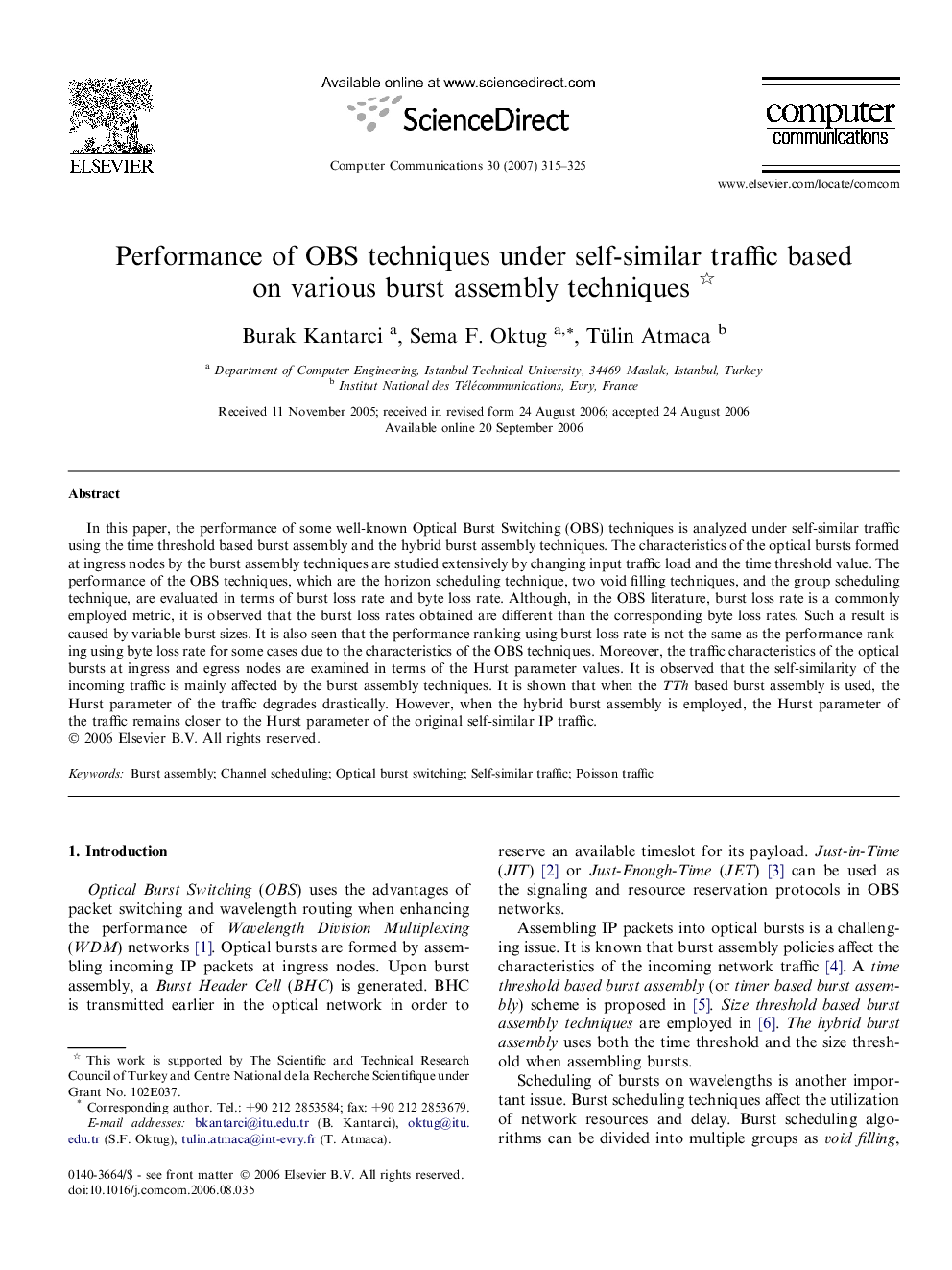| کد مقاله | کد نشریه | سال انتشار | مقاله انگلیسی | نسخه تمام متن |
|---|---|---|---|---|
| 447259 | 693413 | 2007 | 11 صفحه PDF | دانلود رایگان |

In this paper, the performance of some well-known Optical Burst Switching (OBS) techniques is analyzed under self-similar traffic using the time threshold based burst assembly and the hybrid burst assembly techniques. The characteristics of the optical bursts formed at ingress nodes by the burst assembly techniques are studied extensively by changing input traffic load and the time threshold value. The performance of the OBS techniques, which are the horizon scheduling technique, two void filling techniques, and the group scheduling technique, are evaluated in terms of burst loss rate and byte loss rate. Although, in the OBS literature, burst loss rate is a commonly employed metric, it is observed that the burst loss rates obtained are different than the corresponding byte loss rates. Such a result is caused by variable burst sizes. It is also seen that the performance ranking using burst loss rate is not the same as the performance ranking using byte loss rate for some cases due to the characteristics of the OBS techniques. Moreover, the traffic characteristics of the optical bursts at ingress and egress nodes are examined in terms of the Hurst parameter values. It is observed that the self-similarity of the incoming traffic is mainly affected by the burst assembly techniques. It is shown that when the TTh based burst assembly is used, the Hurst parameter of the traffic degrades drastically. However, when the hybrid burst assembly is employed, the Hurst parameter of the traffic remains closer to the Hurst parameter of the original self-similar IP traffic.
Journal: Computer Communications - Volume 30, Issue 2, 15 January 2007, Pages 315–325